

 The South African
The South AfricanOriginally published in Journal of Defence Science Vol 6 No 2 Pgs 119-126
Published on the Website of the South African Military History Society in the interest of research into military history
Copyright Dr Brian Austin 2001.
The Boer War in South Africa (1899-1902) was the first occasion in which wireless communications were used in military conflict. This article traces the history from the point of view of both the British and the Boer forces, both of which had intentions to use this latest invention on the field of battle. Marconi's apparatus, in its most elementary form, went with the British Army to the front but failed; the Boers' German equipment was captured and never saw service. The British Army soon rejected wireless but the Royal Navy acquired the apparatus and made it work. No doubt circumstances and personalities played their part but by far the major factor in determining success and failure was the natural electromagnetic environment.
The Boer War was declared on 11 0ctober 1899, just three years after Marconi arrived in England. from Italy with his elementary wireless signalling apparatus. While described by some as the last of the gentlemen's wars, the Boer War is probably more accurately the war that linked two centuries in time, tactics and technology; it was certainly the first mililitary conflict in which wireless communications were used. The combatants were the Kommandos of the Boer Republics of the Transvaal and the Orange Free State - bolstered by volunteers from Europe, Russia and even the United States - and the British Army supported by contingents from Canada, Australia and New Zealand. The Boers, fiercely independent and determined to remain so in the face of advancing British Imperialism across southern Africa, were finally driven to declare war on the British garrison troops over issues of citizenship for the Uitlanders, foreigners mainly from England who had been attracted in their thousands following the discovery of gold near Johannesburg in 1886.
At the outset, some 48 000 Boers were ranged against the 27 000 British soldiers then in South Africa. The ferocity and sheer effrontery of the Boer attacks stunned an ill-prepared British force. In Natal, the Army lost a General within a week of the opening salvo and what may have appeared at first to be just an uprising by undisciplined farmers, untutored in the arts of war, immediately took on the trappings of a major confrontation. The Boers, equipped with Mauser rifles imported from Gennany for just such an eventuality, were superb marksmen and the smokeless cartridges fired from the saddle or the trench never betrayed their presence. Within a month of that first shot being fired, an expeditionary force of 47 000 men, the largest to leave British shores for nearly a century, was on its way to fight a war in a vast and rugged land [1].
The British military were amongst the most interested observers at the first demonstrations of Marconi's equipment on Salisbury Plain late in 1896. Representing the Royal Navy was one Captain (later Admiral Sir Henry) Jackson, a pioneer himself in the science of communicating without wires and one of Marconi's most avid supporters. Amongst the Army's observers was Captain J N C Kennedy RE, (figure 1), soon to play a most active part in assisting Marconi with further experiments and then in setting up the first wireless sets to be deployed on the battlefield just three years later [2].
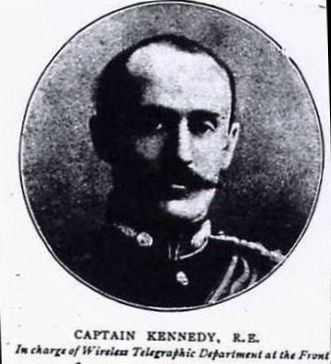
Fig 1 Capt J N C Kennedy RE
Museum of Army Communications, Blandford
During those tests, and in subsequent experiments over land around Bournemouth and across the sea between there and Alum Bay on the Isle of Wight (a distance of about 23km), Marconi achieved reliable communications using vertical wire antennas up to 37m long and connected to earth at one end. This monopole, as we would term it today, soon became known as the "Marconi aerial". The transmitter (figure2a),consisted of an induction coil capable of producing 250 mm discharges between the spheres of a spark gap when operated by a Morse key in series with a 14V battery of 0bach cells delivering 6 to 9 A. This transmitter relied entirely on the natural resonance of its antenna for, any degree of tuning and, witha similar configuration at the receiver, was referred to, at the time as a "plain aerial working" [3]. The receiver (figure2b) made use of Marconi's own version of the coherer - a form of shock-excited switch - connected between the antenna and earth as the detector of the electromagnetic waves. After responding to an electrical impulse, the coherer was restored to its non-conducting state by a 'tapper', which operated within a feedback circuit. The Morse code output from the receiver was then displayed visually on the paper tape of a mechanically-driven inking printer.
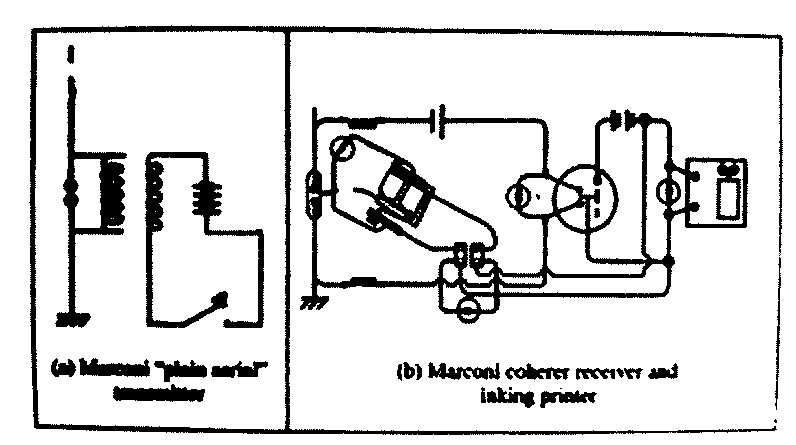
Fig 2. The Marconi transmitter and receiver
It was the outcome of the Royal Navy's alnnual manoeuvres in the summer of 1899 that was directly instrumental in the War Office's decision to send Marconi's wireless apparatus to South Africa with the British forces when the war broke out just a few months later. During those manoeuvres, three ships, HMS Alexander, Europa and Juno, were fitted with Marconi's wireless equipment, while Marconi himself sailed aboard Juno, which was under the command of Captain Jackson RN [4]. The exercise took the form of a naval encounter between two squadrons, only one of which was equipped with wireless and thus able to communicate well beyond visual range. Marconi's apparatus performed admirably, under typically testing naval conditions and a maximum communication range of 136 km was reported. The shipboard antenna, again the only frequency-determining element in the system, was attached to the main top mast and consisted of about 50 m of wire running to the lower after-bridge where the apparatus was housed. Wireless signals, exchanged both by day and night, not only greatly assisted the tactics employed by Captain Jackson's squadron but also proved the efficacy of Marconi's 'jigger', a transformer between the antenna and the transmitter and receiver. Its use brought about a marked increase in sensitivity, and hence in range, and established the principle of impedence matching - itself a major technical advance. However, the lack of any significant tuning or selectivity, except for that provided by the specific length of the antenna, meant that only one transmitter could operate at a time if overwhelming interference was to be avoided. It would be another year before Marconi adopted Oliver Lodge's principle of 'syntony" (what we now call resonance) to markedly improve the sharpness of the tuning of his receiver [5] Only then would it be possible to select the wanted transmission from the cacophony of noise gnerated by the impulsive sparks from many transmitters, all operating at the same time.
In view of what was soon to follow on the South African veldt, the key part played by the vertical wire in the communications process was critical. It was one of Marconi's fellow countrymen, a Professor AscoIi, who determined the optimum length when he showed that "the length of the wave radiated (was) four times the length of th vertical conductor." This result and the recognition by J.A. Fleming, following Marconi's lecture to the lnstitution of Electrical Engineers in 1899, of the importance of the quality of the earth connection were to be crucial factors that helped to explain the performance of the wireless equipment deployed near Kimberley just a few months later.
Britain certainly underestimated both the will of the Boers to fight and their resourcefulness to do so once hostilities commenced. By 14 October 1899, just three days after the first probing shots were exchanged, the towns of Kimberley and Mafeking, plus their encamped British troops, were under siege. Two weeks later, Ladysmith suffered the same fate. On 14 October, too, three divisions of infantry plus supporting cavalry set sail from Southampton for the Cape. With these went six engineers frorn the Marconi Company (Messrs Bullocke, Dowsett, Elliott, Franklin, Lockyer and Taylor), some RE sappers to supply, the necessary manual labour (figure3), as wel1 as five so-called portable wireless stations made up of the Marconi apparatus of the time. In command of the RE detachment was Captain Kennedy, by now an acknowledged expert in the use of wireless.
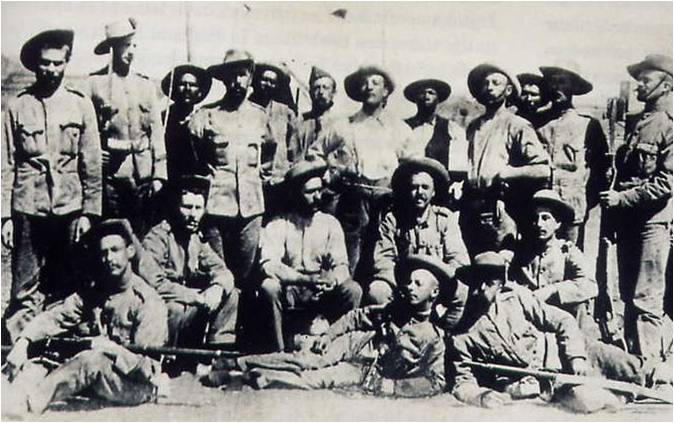
Fig 3 Marconi engineers and Royal Engineers sappers in South Africa 1899
(GEC-Marcopni Archives)
It was originally intended that the wireless sets would be used for ship-to-shore communications by deploying them at the ports of disembarkation. By doing so, it was hoped to coordinate the process of landing masses of men, stores, horses and and the other impedimenta of war. However, soon after their arrival in Cape Town in December 1899, Bullocke, at Captain Kennedy's request, "gave a show" of the equipment's capabilities for the General, his staff officers and military attaches at the Cape Town Castle. It went off successfully even though the distance signalled was but a token "few hundred yards" [6]. No doubt impressed by this achievement and reinforced by Kennedy's firsthand account of the results on Salisbury Plain, the planning staff decided to deploy the five wireless sets and their operators at the front, and Marconi's engineers indicated their willingness to accompany the equipment and to prepare it for action.
Neither the British commanders in South Africa about to set out for the hinterland nor their government at home had appreciated quite how thoroughly President Kruger had been preparing for war. Ever since the abortive Jameson Raid of 1896 that had tried to wrest control of the Transvaal from the Boers, he had been stockpiling considerable quantities of weapons and ammunition. By July 1899, after the breakdown of talks with the British High Commissioner Sir Alfred Milner, war seemed inevitable and Kruger was prepared. ln addition to his Kommandos, his Staats Artillerie was also well equipped and well trained, thanks particularly to the ready support given to the Boer republics by Germany. Signalling, too was afforded a high priority and the Republics' telegraphic communications' networks had been rapidly expanded in recent years. As early as 1897 the State Telegraph Department in the Transvaal, and that supporting the railway network, began to upgrade their lines and to train telegraph operators by the score [7]. The network eventually became so extensive that by the outbreak of war all the Boer lagers around Ladysmith were in contact with each other and with their headquarters in Pretoria, and heliographs were in general use [8]. But wires and cables are vulnerable both to attack and to 'tapping', an art in which the Boers were well-versed, and the 'Helio' did not work at night so some other means was required to link the various forts that ringed Pretoria.
Kruger's General Manager of Telegraphs, one C K van Trotsenburg, was an able engineer who had followed developments in the world of wireless communications with much interest and was therefore in a position to offer a solution. He had already investigated the supply of suitable wireless telegraphy equipment for the forts and had received quotations for the necessary apparatus from Messrs Siemens and Halske in Berlin, the Societe Industrielle des Telephones in Paris, and, most intriguingly, from the Wireless Telegraph and Signal Company, Ltd in London - Marconi's very own company. After visiting Europe in July to inspect each company's equipment, Meneer van Trotsenburg decided in favour of the German apparatus (figure4) and an order for six sets of vonkeltelegraafinstrumenten (spark telegraph instruments) was placed with Siemens and Halske on 24 August 1899 [9]. This was in addition to the heliographs, signal flags, compasses and field glasses that the company had already supplied to the Boers [10]. The wireless equipment was duly broken up and loaded it aboard five vessels presumably, in the interests of security, which sailed from Hamburg for South Africa early in October 1899.
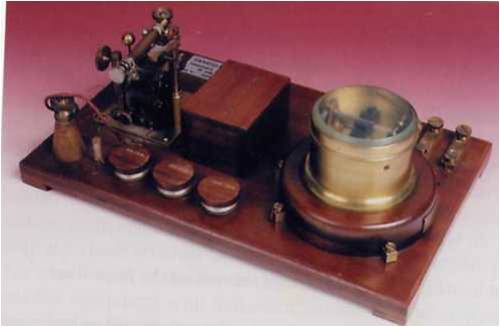
Fig 4. A reconstruction of the Siemens and Halske receiver supplied to the Boers
(Siemens AG)
In their first week of December 1899, Marconi's engineers, Kennedy's sappers and the five "portable wireless installations", left Cape Town for De Aar, an important railway junction and dispersal point for British troops moving north to the besieged towns of Kimberley and Mafeking (figure. 5). Certain shortcomings in the provision of equipment were already apparent. Most important was the lack of suitable masts or poles with which to support the wire antennas. Since the antennas would turn out to be the key elements in the system, this was serious. The poles supplied with the Marconi equipment were too bulky for use in the field and were discarded while those purloined from the Customs shed in Cape Town were equally unsuitable. lt was, therefore decided to make use of local 9m bamboo poles that could be lashed together to reach an adequate height. In addition, an order was placed, in all haste, for a number of balloons and kites from the Royal Engineers Balloon School at Aldershot. These would then augment the few that Kennedy had been able to borrow and would ensure that he and his men could get the wires aloft somehow.
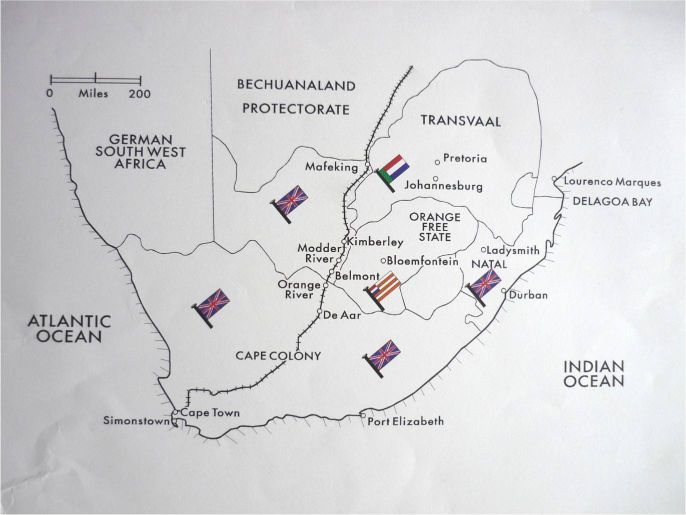
Fig 5. South Africa at the time of the Boer War
From De Aar, three of the sets, plus their civilian operators, were transferred to the military encampments at Orange River, Belmont and Modder River with the intention of establishing wireless communications between them. ln addition, a wireless station was also set up at Enslin "about 27 kms from Modder" (Figure 6) where, according to Bullocke, Lord Methuen commanding the 1st Infantry Division feared "a surprise" from the Boers.
While in transit from Cape Town the wireless contingent witnessed their first severe South African thunderstorm and reported that the accompanying lightning was "the most vivid any of us had ever seen". It was confirmed to Bullocke by those in the know that such pyrotechnics were almost a daily occurrence in that part of the world at that time of the year. This duly prompted him to remark in his letter of 11 December to the Company back home in EngIand that it would be a "delightful time for Xs", the accompanying atmospherics that so disrupted wireless communications.
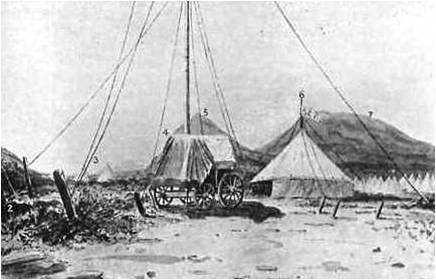
Fig 6. Enslin camp, 1899
On setting up the equipment a week later, Bullocke reported that attempts to communicate between De Aar and Orange River, some 112km apart, were unsuccessfuI. He stated that he had used "a curly aerial about 18m in height and [a] good earth", yet in spite of that he could not explain the lack of success. Problems abounded. Kennedy, at De Aar, resorted to using kites but there was insufficient wind to allow them to be flown that day. When there was, he was able to eIevate a wire to a height of 152m, but had no success either because Elliott, at Orange River, had broken his pole [12]. But they persisted doggedly and at the end of the month had some success when contact was made between Orange River and Modder River, a distance of 80km, but only by using an intermediate or relay station at Belmont, and such achievements were few.
The pre-war naval manoeuvres of 1899 were very significant in the history of wireless in general and military wireless in particular.
Attempts to make the Marconi equipment function reliably in the field continued for a further six weeks but were thwarted for at least half the time because most sets were unusable. If cyclonic dust storms had not splintered the bamboo masts, or lightning discharges overwhelmed the coherers, then the wind was either too weak to fly the kites or so fierce as to tear away the balloons. Not surprisingly, on 12 February 1900, the Director of Army Telegraphs gave orders for the three sets along the Kimberley line to be dismantled. This fate soon followed for the two others that had been dispatched a month before, along with Messrs Bullocke, Taylor and Captain Kennedy, to join General Buller's forces attempting to relieve the besieged town of Ladysmith [13]. Since neither Marconi's employees, nor Captain Kennedy, could offer what he considered a reasonable explanation for this state of affairs, the Adjutant General Sir Evelyn Wood, duly had the wireless equipment sent to the Royal Navy in Simonstown where he believed that they might have some use for it.
The lack of any success by the Army with this hastily-assembled Marconi apparatus, for whatever reason, did not deter the Royal Navy from installing the discarded wireless sets on board five cruisers operating a blockade in Delagoa Bay, Portuguese East Africa. The admirals remembered only too well how effective wireless had been during those manoeuvres just the year before. The particular task now facing the Royal Navy was to stop and search any merchantmen heading for the port of Lourenco Marques (now Maputo) and suspected of carrying mi!itary contraband destined for the Boers. Any measure that would assist in this was welcome and effective ship-to-ship communications certainly fell into that category. And so the wireless apparatus was transferred to the Delagoa Bay Squadron and on 17 March 1900 a set was fitted in the cruiser HMS Thetis (Figure7), which thus became the first naval vessel to carry wireless equipment in an active theatre of war. Soon her sister ships, HMS Forte, Magicienne, Dwarf and Raccoon would be similarly equipped and the blockade operation was pursued in earnest [14]. .
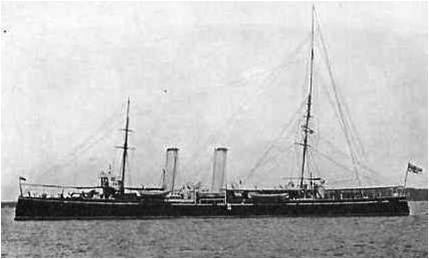
Fig. 7 HMS Thetis showing the extended mast carrying the antenna
In great contrast to the recent dismal results on land, wireless communication at sea proved to be an unqualified success. Its use turned out to be invaluable to the Navy for, not only could the cruisers cover a wider search area while still remaining in contact with one another, but concerted action was possible while both out of sight of each other and of their quarry. In addition, speedy communication was possible between the ships at sea and the Commander-in-Chief in Simonstown, about 1600km away, by using the Magicienne, lying at anchor in the bay, to relay messages via a landline link to the shore and, thence, via the telegraph network to the Cape.
To use the wireless equipment effectively required that the masts of the ships be extended to accommodate the long wire antenna. HMS Thetis, under the command of Captain Stokes-Rees, duly raised hers to a height of 44m above the waterline for this purpose.Tests conducted on 13 April 1900 yielded a range of 85 km, which greatly increased the flexibility of the blockage operatlons. SubsequentIy, she was fitted with a horizontal, twin-wire antenna, which proved to be so successful that thereafter this became the standard installatlon on Naval vessels.
The wireless equipment remained in service with the Royal Navy until November 1900 when it eventually went into storage owing almost certainly, to the change in the nature of the war on land. The Boers, though in retreat, were by no means defeated. For the next 18 months they fought a bitter guerrilla campaign against a British Army that now numbered almost half-a-million men under the command of General Lord Kitchener. Wireless played no further part. lt had served its immediate purpose, and although a failure on land, it had ushered in a new era for the Navy. Its success in Delagoa Bay, coupled with the experience of the naval manoeuvres in 1899, was undoubtedly behind the Royal Navy's decision to equip 42 ships and eight shore stations around Britain with wireless by the end of 1900 [15].
Much has been written about the failure of the wireless equipment when tried by the Army but rather less has appeared about the success achieved when used by the Royal Navy. It should be appreciated that each service had use of the equipment for roughIy the same length of time and in both cases it was set up and operated by the same six engineers from the Marconi company, and yet its performance was markedly different in the two theatres of operations. One has to ask why this should have been so.
When wireless proved so disappointing on the South African veldt after the favourable reports that followed both the Salisbury Plain demonstrations in 1896 aud the naval manoeuvres of 1899, the immediate reaction of Signor Marconi was to blame the military authorities for "their lack of proper preparation" by not providing the correct poles to support the antennas. Some observers closer to the scene also suggested it was due to "the iron in the hills", while Marconi's own engineers, though having some sympathy with their employer's view, also believed that the locality of the north-western Cape Colony, both geological and meteorological, may well have had somewhat more to do with it. The subsequent success achieved by the Navy using the same equipment, but in a vastly different environment, leads one to conclude that antennas, geology, meteorology and the season of the year were, indeed, all to blame.
As mentioned, the 'plain aerial working' used with the Marconi equipment meant that the particular frequency on which a transmitter radiated maximum energy was determined solely by the length of that vertical wire, whether attached to mast, kite or balloon, as well as by the quality of the electrical connection to the earth below. EssentiaIly, when the wire was a quarter wavelength long and the earth connection was sound, the system would have been at its most efficient but only at that particular frequency. The implication of this for the British Army when it tried to use the equipment with makeshift antennas on what were described as the "dry, sandy plains of the Northern Karroo", was that no two wireless installations were ever likeIy to have been operating on exactly the same frequency because the antenna lengths were so variable and the earth connections so poor.This fundamental problem was to some extent offset by the lack of selectivity elsewhere within the primitive systems and by the essentiully broadband nature of the spark transmitters. But the poor earth connections would also have introduced loss, which in turn would have reduced significantly the amount of power both radiated by the antenna and propagated by the ground wave that was almost certainly the mode of signal propagation at the sort of frequencies involved.
Since the Marconi receiver consisted of little more than a coherer its performance, and hence the range over which communications would have been possible, were entirely dependent on the power radiated by the transmitting antenna and on the electrical conductivity of the ground beneath the antennas and between the wireless stations themselves. Bullocke and his men appreciated this to some extent since it was reported that that "sheets of tin" (probably galvanized iron) were buried beneath the antenna masts to improve matters but all was to no avail because other natural phenomena also conspired against them.
It was shown, some many years later, by Vice [16] that the ground conductivity south-west of Kimberley was typically between 6.5 and 10 mS/m at a frequency of 500kHz, (figure 8). At a guess, Marconi's equipment might have operated anywhere from 500kHz to about 4MHz, depending upon the length of the antenna actually depIoyed, thus some variation in the conductivity would be expected over that range. Whatever it was, these values shouId be compared with the 14mS/m at 1 MHz that is typical of Salisbury Plain, the site of so many of Marconi's early experiments [17]. Not only would the antennas have been more efficient in England but the groundwave would have suffered less attenuation as it propagated along the surface of the more highly conducting earth too. By contrast, when used by the Royal Navy the considerably higher conductivity of the sea water (4000 mS/m) would have enhanced significantly, both the performance of the antennas and the propagation over the surface of the sea. Thus, whether in the Atlantic Ocean in 1899 or in the Indian Ocean less than a year later, one reason for the Royal Navy's consistent success with wireless is now readily apparent.
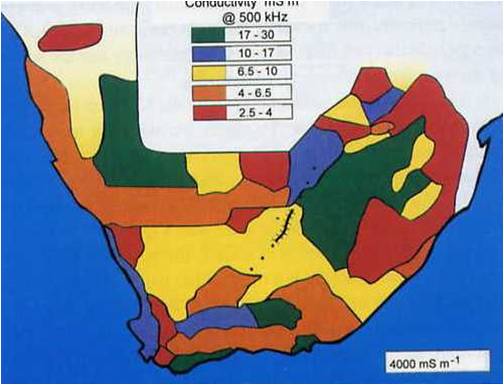
Fig: 8. Map of ground conductivity in South Africa after Vice [16]
There is an additional important factor that must also be considered and that too, was frequently commented upon by Marconi's engineers at the front: the intensity of the lightning and the paralysing effect it had on the coherers in the receivers.In certain parts of South Africa is one of those regions of the world in which severe lightning is but a fact of life during the summer months [18]. Measured as the number of lightning flashes per square kilometre per year, the region south-west of Kimberley has typically three to five such events that occur predominantly between November and April, the height of the southern hemisphere summer (Figure 9). This was precisely when the British Army was hoping for useful service from its secret weapon, Marconi's wireless apparatus. By contrast, once again, the level of lightning activity for the whole of the British Isles never exceeds one flash per square kilometre per year [19], and none was reported during Marconi's demonstrations on Salisbury Plain nor any during the manoeuvres at sea in 1899. When the Royal Navy equipped its Delagoa Bay Squadron with these discarded wireless sets during March the following year, and then used them throughout the winter months, such heavenly pyrotechnics were non-existent. Thus, not only did the ships benefit from better antennas and propagation conditions, but the signal to noise ratio, in modern parlance, would have been markedIy better too, given the absence of lightning and its attendant 'Xs" that had so plagued the Army on the ground just a few months before.
![Map of lightning ground flash distribution in South Africa (Eskom[18])](./wirelessabw9.jpg)
Fig 9. Map of lightning ground flash distribution in South Africa. The darker the colours the more frequent the lightning (Eskom[18])
The history of wireless is replete with stories of its origins but probably none is more intriguing than that describing its first use in a military conflict. That it actually took place well over a century ago during the Boer War is a fact worth recording in its own right but, to record only the disappointing performance achieved by Marconi's apparatus when rushed into service in a role for which it was never intended does not tell the full story. It can so easily be presented as but an ill-judged attempt to use a revolutionary technology before it was ready, but that would be to ignore totally its performance at sea. For reasons not understood at the time, wireless failed to assist the Army but it more than proved itself on board Her Majesty's ships. We now know that there were many factors involved, not least of which were the geophysical conditions that prevailed in southern Africa. They, probably more than anything else, determined the outcome of this first use of wireless in warfare.
Acknowledgement is made to the following for information and material supplied and permission to publish: Museum of Army Communications, Blandford; National Maritime Museum, Greenwich; Ditsong Museum of Military History, Johannesburg; Royal Engineers Museum, Chatham; Science Museum, London; GEC-Marconi Archives, Chelmsford; National Army Museum, London; Eskom, Johannesburg; Rutherford-Appleton Laboratory, Oxfordshire; and Siemens AG, Munich. Special thanks are due to the late Professor D C Baker of the University of Pretoria and Mrs Lynn Fordred, the then curator of the South African Corps of Signals Museum, for uncovering the Boer side of the story.This paper was adapted with permission from one of the same title presented by the author at the Institution of Electrical Engineers conference on "100 years of radio", Publication 411, 5-7 September 1995 and then subsequently republished in The Journal of Defence Science (UK), to whom acknowledgement is made.